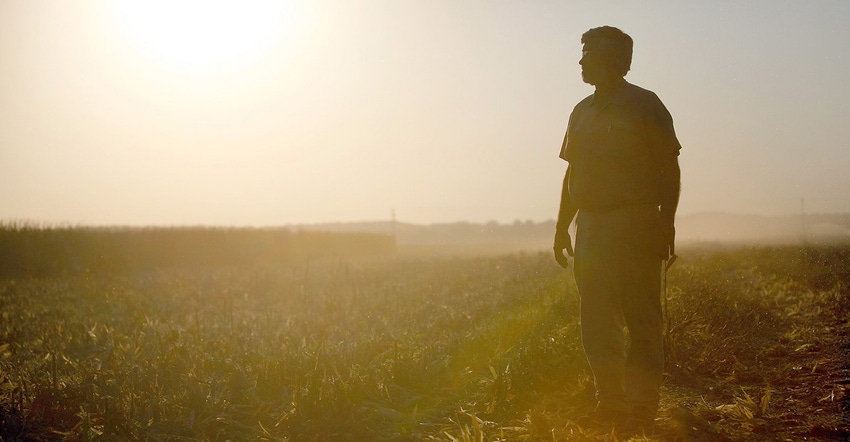February 4, 2019

Commodity markets are full of uncertainty under normal circumstances. Weather, economic conditions, political decisions at home and overseas — all can make futures trading an unsuitable profession for the faint of heart.
But these are not normal times, and that makes predicting the markets fraught with even more peril, according to Dr. Pat Westhoff, director of the Food and Agricultural Policy Research Institute at the University of Missouri-Columbia.
Westhoff, whose team of economists at FAPRI provides analysis for members of Congress on farm programs and other agricultural economic issues, talked about “The Market Outlook and the New Farm Bill” during a University of Arkansas Food and Agribusiness Webinar on Jan. 24. To view the webinar, visit https://youtu.be/8RPZZd0PpC0.
“One thing I want to talk about upfront is what’s missing, things that we would normally know right now that we don’t know, partly because of the government shutdown and partly because of government trade disputes,” said Westhoff.
“As a reminder, markets are always uncertain — we never have perfect information. There is always a good excuse for why our numbers may not be right, but I have more uncertainty to talk about than normal today around market projections.”
(Congressional leaders and President Trump agreed to a temporary funding of the government on Jan. 24, but there was no word on when, or if, normal functions of the government, including market data and analysis provided by USDA, would return.)
Unknowns
Among the known “unknowns” confronting the markets:
• Will the trade tariffs and restrictions still be enforced three months from now? “We don’t know,” said Westhoff.
• Will the U.S.-Mexico-Canada Agreement be finished by Congress, or will there be new disruptions in the process?
• Will there be new trade disputes with China?
• If there isn’t an agreement, what happens?
“That’s one set of issues we talk about a fair amount,” he noted. “The other one is all of the information that we don’t have because of the government shutdown. Weekly actuary reports would normally be coming out that we don’t have. How many soybeans did China buy recently? We don’t know. How big was last year’s corn crop?
“Even if those previous estimates that are in the marketplace are relatively close, it’s almost inevitable when the USDA does issue their final estimates and there is a change in price, those could move the markets. Are we looking at something like nearly a billion bushels of soybeans on hand as the end of the market year nears?”
Other questions
Other questions include how the weather last fall translated into the wheat acres? “Where do we end up?” he asked. “We don’t know right now.”
Finally, farmers could use USDA’s numbers to compute the marketing year average price that will be used to determine Price Loss Coverage or PLC payments for rice, for example, and now for cotton.
“It’s very helpful to look at the monthly prices that the USDA puts out, and those aren’t always easy to guess, given where cash markets or future markets might be, because they take into account what the cash price might be and also what people forwarded from a month ago,” Westhoff said.
“Right now we have October but don’t have November prices. Shortly we’ll be missing the December prices that we would have at the end of this month, as well. There’s more uncertainty about the basic facts of life than we would normally have.”
With just the normal uncertainty in the commodity markets, organizations like FAPRI try to “hedge” their bets when preparing baseline projections for use by Congress and other institutions that monitor the agricultural economy.
Stochastic analysis
“We try to capture what we call a stochastic analysis,” Westhoff said. “So instead of doing one single best guess about what the future might look like, we take our models and solve them 500 times so we can generate not a single point estimate but a distribution of prices and the like.
“Instead of saying we think the price will be such and such, we say we think it will be in this probability range and what are the probabilities associated with that.”
Last year, for example, the average of FAPRI’s computer-generated outcomes for the U.S. average market price for corn came within 10 cents of the actual price, as reported by USDA, and it’s beginning to appear the same price could hold true again in 2019.
“The green line, in the middle there, would be close to where we would be, say, if we were doing a single best guess about what the future might hold,” he said referring to a graphic of the projections. “This actually is the average of 500 outcomes that we look at.”
Westhoff said the 2018 farm bill passed by Congress and signed by the president in December is “an evolutionary bill, not a revolutionary bill. If you liked the previous bill, you’ll probably like this one.”
There are slight modifications to the Agricultural Risk Coverage or ARC and the Price Loss Coverage or PLC programs, but the basic structure is still the same for each, according to Westhoff.
“Some producers will be allowed to update their PLC yields to their advantage. There are trend adjustments in determining the benchmark revenues for ARC and the possibility of people getting an ARC payment in a given year. There are multiple opportunities for people to get new ARC and PLC selections, so that will be important to think about in the months and years to come.”
For more information about the University of Arkansas System Division of Agriculture Food and Agribusiness Webinar Series, visit www.uaex.edu/ag-webinars.
About the Author(s)
You May Also Like






